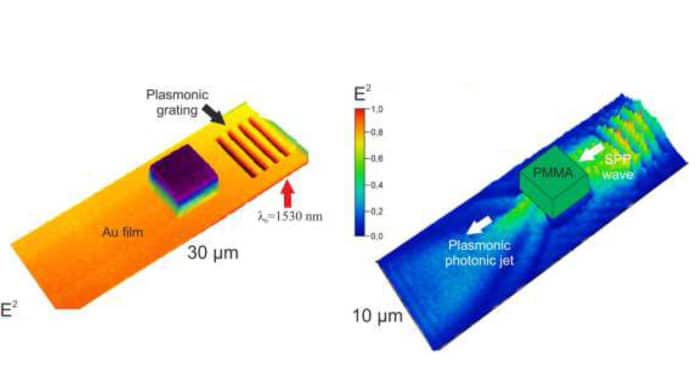Scientists worldwide are working on computer technology based on optical radiation. It is expected that the optical computer would be even faster than the existing fastest machines.
Although, today, these developments remain untapped. One of the problems is the miniaturization of photonic elements since their dimensions still tend to be larger than those of electronic counterparts.
Scientists of Tomsk Polytechnic University with Russian and Danish groups have been able to affirm a plasmonic nanojet effect previously forecasted in practice tentatively. Scientists used a simple method to focus surface plasmon waves into a jet and captured it with a microscope. Later on, the impact of plasmon pressure compression can make optical electronics competitive and boost the formation of an optical computer.
Igor Minin, project manager, professor of the TPU Division for Electronic Engineering, said, “The logical elements of conventional modern processors are tens of micrometers in size. Optical electronics can become competitive provided that we could compress light to a nanoscale.”
“This issue can be solved if we come from photons to surface plasmon polaritons that are special electromagnetic waves able to propagate along the boundary of metal and air or a dielectric. Earlier, we theoretically predicted the implementation of a plasmonic nano jet effect, and now we have managed to prove it experimentally.”
For their study, scientists used a thin gold film. They then placed a 5-by-5 micrometer square particle of dielectric material on its surface for a telecommunication wavelength. The particle obtained, became a microlens able to focus plasmons in a very small area in the form of a nanoscale jet.
Then, by using a microscope at the Moscow Institute of Physics and Technology, scientists captured the plasmon nano jet, which is two-dimensional.
Igor Minin says, “Its dimensions are smaller, thus enabling future devices based on this effect to become more compact. Moreover, electromagnetic radiation can be localized in a very small area. The simplicity of obtaining localized plasmon beams provides ample opportunities for their practical application, for instance, in superresolution microscopes, for the creation of biosensors, and in biological studies where molecular control is required. We have published just the first of a series of planned experimental results.”
Journal Reference:
- Igor V. Minin et al. Plasmonic nanojet: an experimental demonstration. DOI: 10.1364/OL.391861
